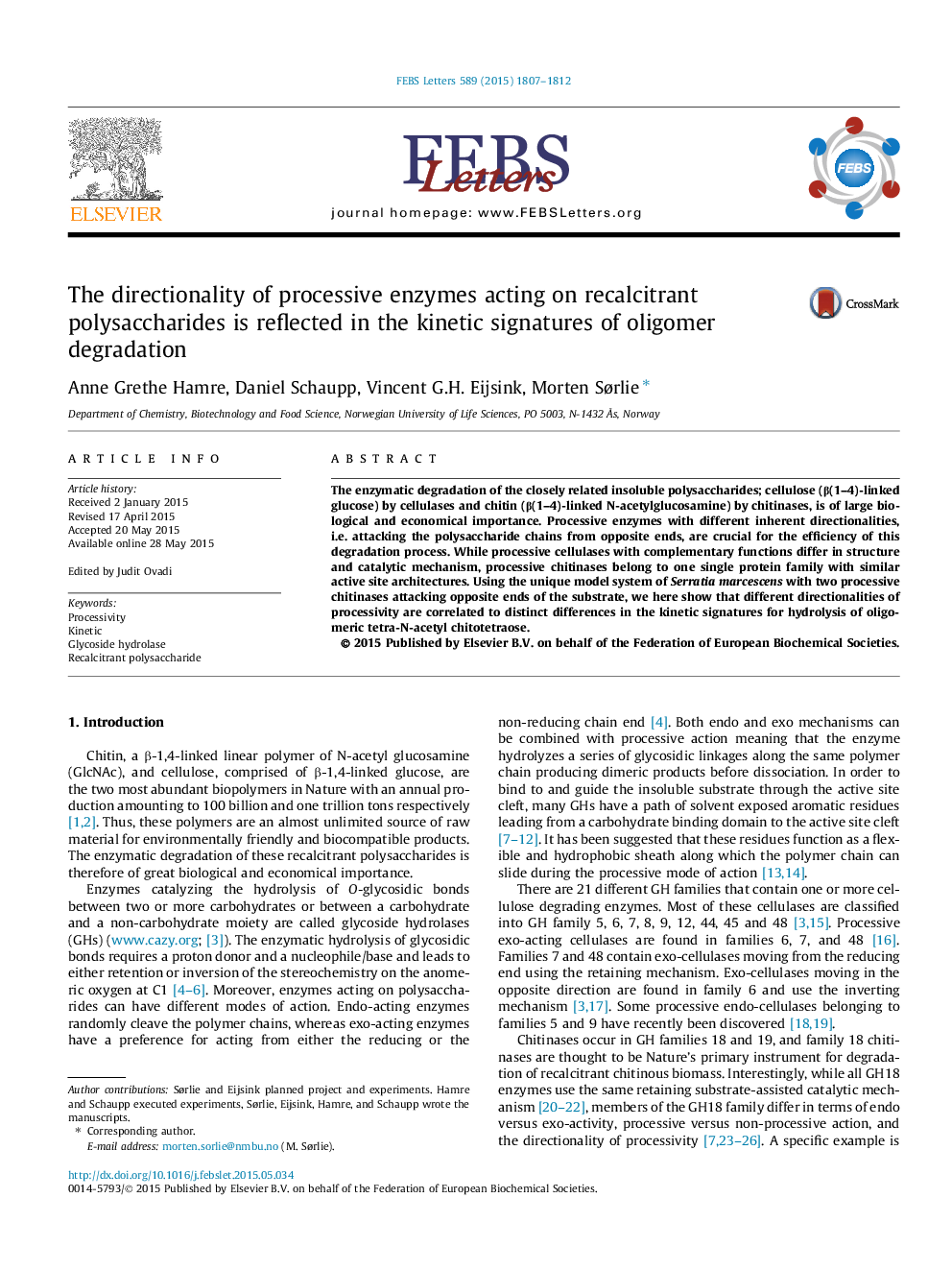| Article ID | Journal | Published Year | Pages | File Type |
|---|---|---|---|---|
| 10870069 | FEBS Letters | 2015 | 6 Pages |
Abstract
The enzymatic degradation of the closely related insoluble polysaccharides; cellulose (β(1-4)-linked glucose) by cellulases and chitin (β(1-4)-linked N-acetylglucosamine) by chitinases, is of large biological and economical importance. Processive enzymes with different inherent directionalities, i.e. attacking the polysaccharide chains from opposite ends, are crucial for the efficiency of this degradation process. While processive cellulases with complementary functions differ in structure and catalytic mechanism, processive chitinases belong to one single protein family with similar active site architectures. Using the unique model system of Serratia marcescens with two processive chitinases attacking opposite ends of the substrate, we here show that different directionalities of processivity are correlated to distinct differences in the kinetic signatures for hydrolysis of oligomeric tetra-N-acetyl chitotetraose.
Related Topics
Life Sciences
Agricultural and Biological Sciences
Plant Science
Authors
Anne Grethe Hamre, Daniel Schaupp, Vincent G.H. Eijsink, Morten Sørlie,
